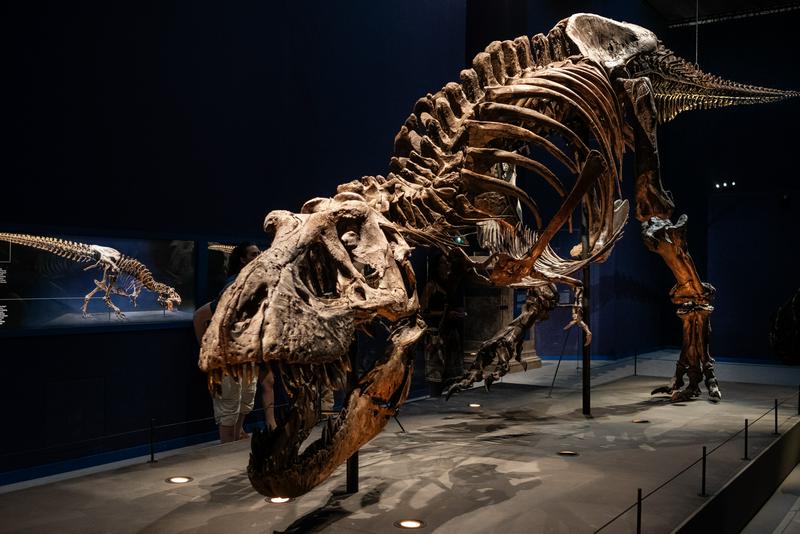The Dinosaur Bone Wars
By | June 13, 2019

The late 19th century saw an explosion in interest in dinosaurs. Two scientists, Edward Drinker Cope, and Othniel Charles Marsh were at the forefront of research and the discovery of new species. Curiously, the drive to find the most bones led to an incredible feud in which both paleontologists used devious and underhanded techniques to win the so-called “Bone Wars.”

Born in 1840, Cope came from a wealthy family of Quakers. He had little formal education, but his intelligence was such that he came to work under the paleontologist Joseph Leidy at the Academy of Natural Sciences in Philadelphia.
Marsh was born in 1831 to a family of modest farmers, but he had a rich uncle, the banker George Peabody, who helped fund his early education. Marsh received a scholarship from Yale and also studied in Berlin. In 1865 he was appointed a professor of vertebrate paleontology at Yale, the first in the United States. Simultaneously, he helped to found the Peabody Museum of Natural History by convincing his uncle to finance it.

Cope and Marsh had apparently first met in Berlin while Marsh was studying there. Although there are few details about their early relationship, it is apparent that they respected each other or were even friends. Cope named one amphibian fossil Pytonius marshii after Marsh and Marsh returned the honor by naming a newly found species of serpent, Mosasaurus copeanus.
Their rivalry seems to have begun in 1868 when large amounts of dinosaur bones were being uncovered in Haddonfield, New Jersey. Cope, who was excavating marl pits where new fossils were being uncovered, showed the site to Marsh. Before leaving, Marsh made a deal with the excavation site’s owner that all new fossil specimens would be sent to him first. Cope credited this duplicity with being the origin of his loathing of Marsh.

Meanwhile, Marsh humiliated Cope for putting an Elasmosaurus’s head on its tail end. Marsh later credited this as the origin of their feud. Cope attempted to purchase every copy of the journal in which his error was published.

The war grew especially nasty when both scientists were engaged in expeditions in the American West to Colorado, Nebraska, and Wyoming where there were lots of fossils to find. Both men and their teams encroached on others. Marsh, who rarely went into the field himself, sent spies to gain intelligence on Cope’s doing using the code name “Jones” for him. The hunt for new specimens in the west became a “Dinosaur Rush” as Marsh bullied his way to the fore and Cope’s work became strewn with rushed errors, many of which were published in the journal The American Naturalist, which Cope had purchased in 1877.
On one occasion Cope snuck onto a Marsh fossil site where he found a skull. He published a paper on it, thus beating Marsh. The problem was that the fossil was set there on purpose by Marsh in order to trick Cope. The error was not corrected for two decades. It is alleged that Marsh had his sites dynamited to prevent Cope from getting access to his dinosaurs, thus destroying fossils. There was so much animosity, the two teams would hurl rocks at one another if they got too close.

Finally, Marsh used his network to become the head paleontologist for the U.S. Geological Survey. By doing so and aided by his other political connections, Marsh was able to cut off vital government funding to Cope. Cope attempted to acquire funds through investments in a silver mine in New Mexico, but the mine failed.
By 1890, it seemed that Marsh had won. Cope was separated from his wife and child and was living alone in Philadelphia, surrounded by his fossils. Not satisfied, Marsh attempted to seize Cope’s fossils claiming they belonged to the government since they were acquired through government funding. Cope won, however, by showing that all his fossils were procured through his own funds.

The feud then erupted into the public and Cope arranged for investigative journalists from the New York Herald to publish stories about their rivalry. Cope accused Marsh of any underhanded undoing possible – bribery, plagiarism, spying, and theft. When one thinks that scientists typically keep their comments esoteric and subdued in scholarly journals and not on the front pages of tabloids, the situation was incredible. For years, scientists knew about the awful behavior of the two paleontologists, but now it became headline news. Due in part to Cope’s accusations, a government investigation was held that led to cuts in funding of the Geologic Survey and the elimination of Marsh’s position.

Cope died nearly penniless in 1897. Much of his collection of fossils was bought by the Museum of Natural History. When he died he donated his skull to science declaring that it should be measured against Marsh’s to prove he had a bigger brain. Marsh died in 1899, also impoverished and did not allow his brain cavity to be measured. Most of Marsh’s collection of fossils landed in the Peabody Museum and the Smithsonian.
Marsh had acquired about 80 new fossil finds during the Bone Wars to Cope’s 56. Before the Bone Wars, there were only 18 known species of dinosaur found in North America. It increased interest in paleontology and would lead to future expeditions. So many bones did they collect that some boxes remained unopened after their deaths. The downside was that the rush to publish findings resulted in bad science and errors which took many years to correct.

